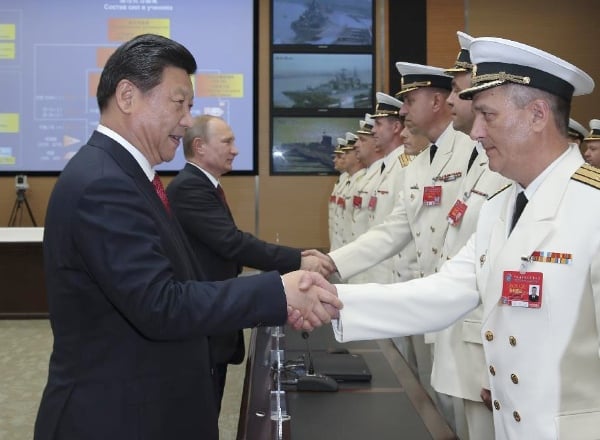
On Thursday, the Chinese People’s Liberation Army Navy (PLAN) frigates Linyi and Weifang left the Black Sea along with a Russian Navy guided missile corvette to begin the first ever round of Chinese and Russian naval exercises in the Mediterranean.
The exercise — Joint Sea 2015 — is mostly a sign of a growing security relationship between Moscow and Beijing, and an attempt to signal the two powers’ ascendance on the global stage.
Besides, it also follows after nearly two years of increased Russian naval activity not only in the Mediterranean, but also the Baltic Sea, the High North, and the Black Sea. However, China also has its own reasons for operating in the Mediterranean, and the current exercise is far from the first time the Chinese military has operated there.
For China, the broader Mediterranean region is of real interest in terms of both energy security and trade.
The Mediterranean constitutes the western end of the “New Silk Road,” the Chinese project to link China with markets and producers across Central Asia and into Europe and the Middle East. In order to provide the Silk Road with a western maritime outlet, Chinese companies have poured considerable resources into modernizing and expanding Mediterranean ports, including the Port of Piraeus outside of Athens, Greece. The broader Mediterranean region, and extending down to the Gulf, is also an important source for China’s supply of energy, which is absolutely crucial to fuelling China’s industries and modernization. China’s energy interests in the region may expand further, as the eastern Mediterranean emerges as a new source of oil and gas. It is far from unusual that commercial and energy interests are usually followed by a military presence, at least on a rotating basis.
And the crumbling order in the Middle East and North Africa also has implications for China.
Beijing abstained from the U.N. vote to authorize military action against the Gadhafi regime in Libya, and is now dismayed by the continuing instability in that country and the broader region. Furthermore, the PLAN conducted a major noncombatant evacuation, albeit with the substantial help of leased commercial ships, of Chinese nationals working in Libya shortly before the coalition and NATO airstrikes began against Libyan targets.

In March, China returned to the broader region to conduct yet another evacuation of Chinese citizens, this time from an increasingly unstable Yemen.
Those two cases highlight the fact that Africa and the Middle East play host to a growing number of Chinese companies and workers, who are in the region working and investing in substantial infrastructure projects and production facilities.
China is also aware that the uprisings in the Middle East and North Africa may well have a direct effect on China’s internal stability. China has a Muslim minority of its own, and Beijing is increasingly worried that the unrest in the Middle East and North Africa may one day inspire similar uprisings in China’s interior. A Chinese military presence in the Mediterranean, then, provides an opportunity to monitor the developing situation up close and continuously.
China has also sought to buttress its military-to-military relationships in the Mediterranean region. Chinese warships detailed to the counter-piracy effort off the Horn of Africa have on numerous occasions ventured into the Mediterranean for port visits in both European and North African countries.

The Chinese and Turkish air forces also exercised together in 2010 in central Turkey, which is the first time Chinese units had exercised together with a NATO country. More recently, Turkey decided to acquire a new air defense system from China, causing concerns in both Washington and in allied capitals in Europe about the interoperability with NATO and U.S. air and missile defense networks. Israel has also had a defense industrial relationship with China for many years, including the export of UAVs from Israel to China, which has at times irritated Washington.
Given the strategic interests, and the long-term commercial, political, and military relationships Beijing is seeking to build in the Mediterranean region, it is more than likely that this will not be the last Chinese naval exercise there.
And this has implications for both the United States and its European NATO allies.
The Mediterranean is no longer NATO’s mare nostrum, and this is a reflection of the broader global shift of power away from the West and toward Asia.
In the future, the Mediterranean will be a more congested and competitive space, and will include new maritime actors that hail from ports far from the region.





